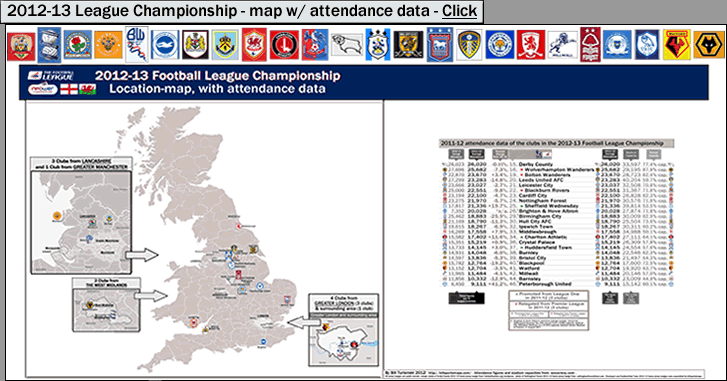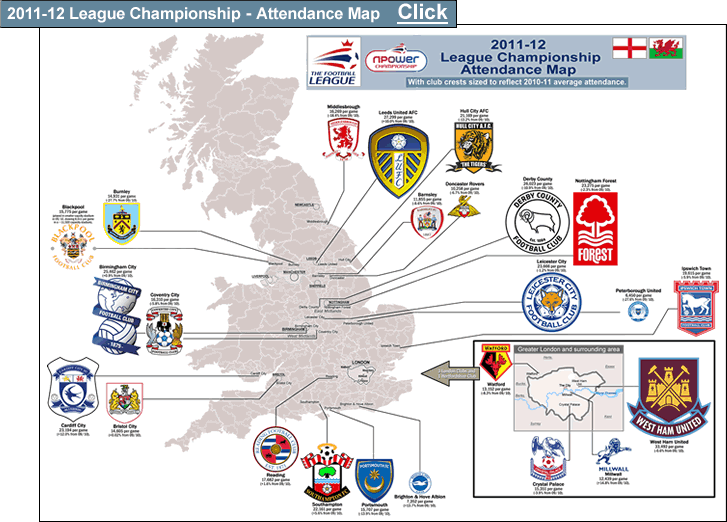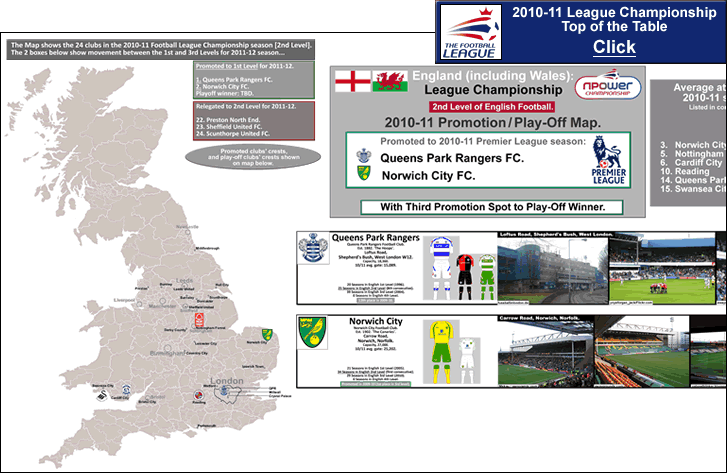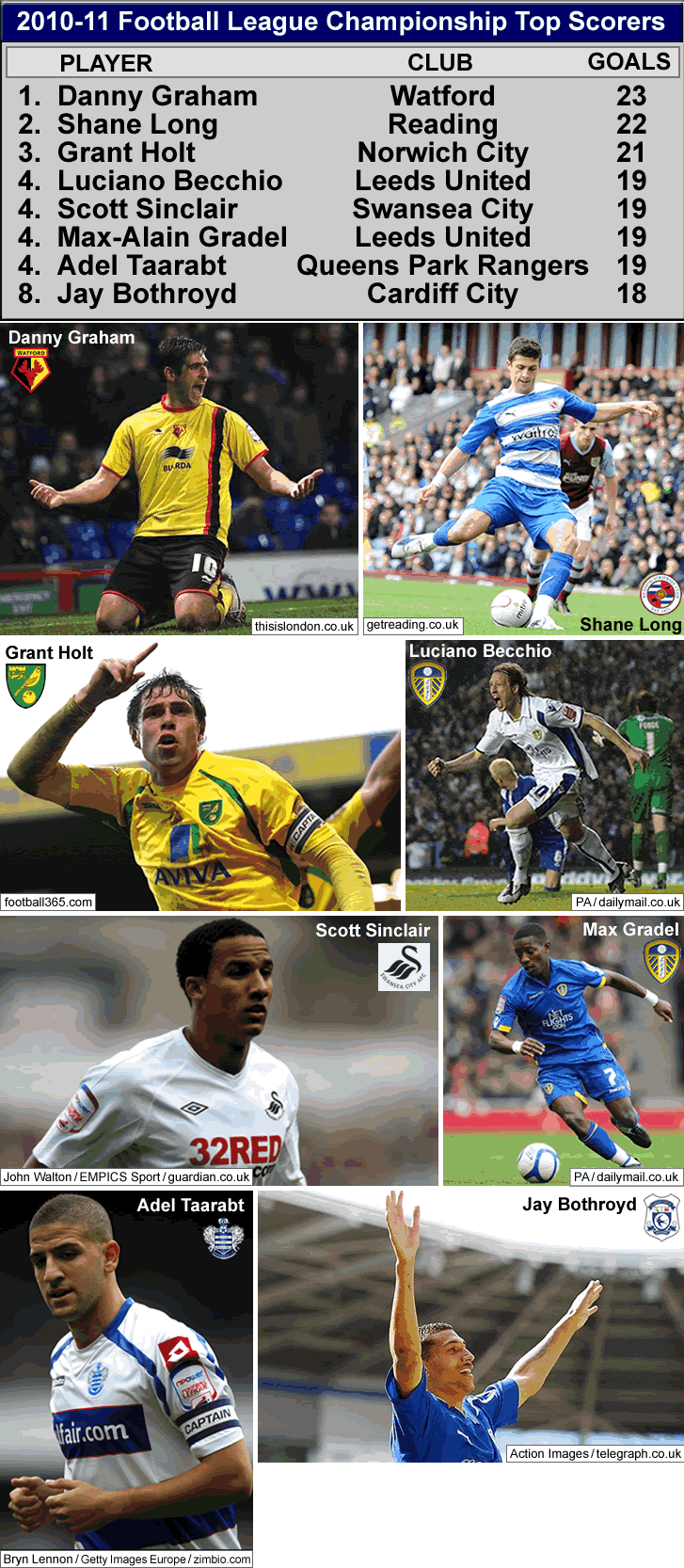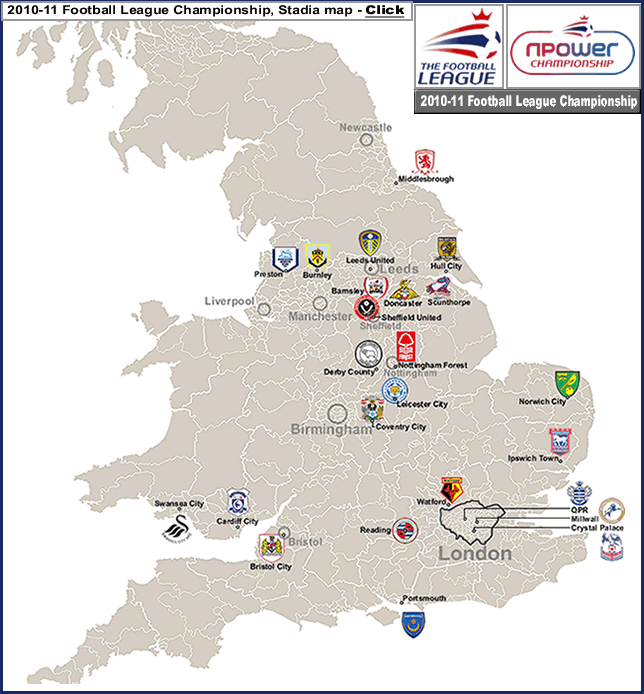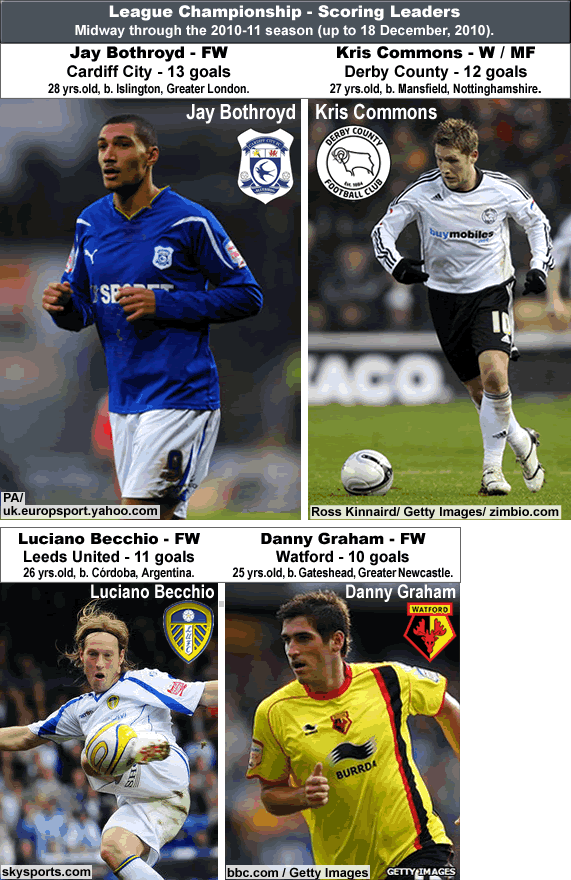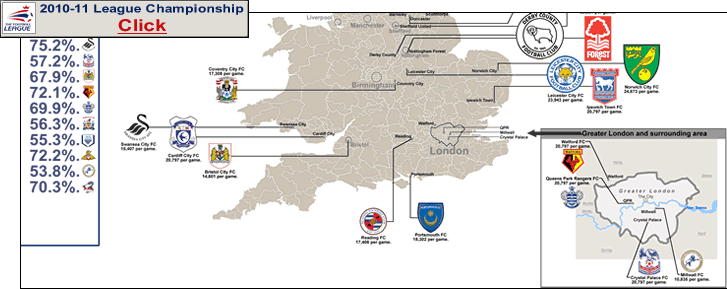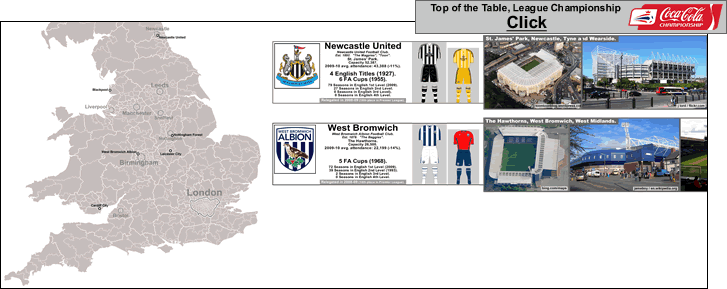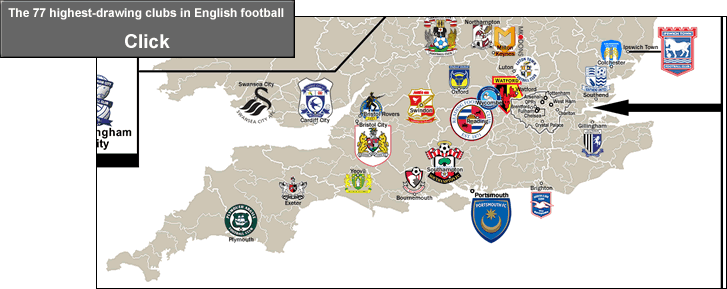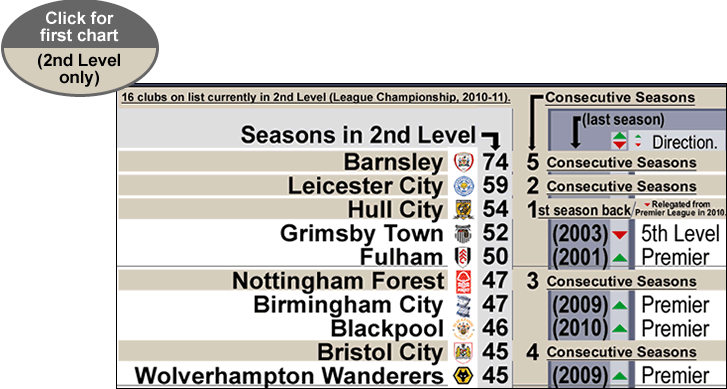
[Note: to see my latest map-&-post on the English 2nd division (the Football League Championship), click on the following, category: Eng-2nd level cham'ship.
...
Please note: All information below is accurate up to the close of the 2010-11 Football League season [June 2011].
The English 2nd Level (aka the Football League Championship) – All-time 2nd Level…
The clubs that have spent the most seasons in the 2nd Level, which has been called…the Second Division (1892-93 to 1991-92) / Football League Division One (1992-93 to 2003-04) / Football League Championship (2004-05 to 2010-11)…
By Bill Turianski on 22 November 2010; twitter.com/billsportsmaps.com.
The first chart is shown in partial form further above, with just the top 10 all-time 2nd Level clubs. Click on it and the full first chart will show the 35-club All-time 2nd Level list. Clubs which have the tan horizontal bar running across are the 16 clubs that are on the All-time 2nd Level list and are currently in the 2nd Level (2010-11 season).
Those 16 Clubs on the all-time 2nd Level list that are currently [2010-11] in the 2nd Level are…
Barnsley, Leicester City, Hull City, Nottingham Forest, Bristol City, Derby County, Burnley, Sheffield United, Preston North End, Cardiff City, Portsmouth, Middlesbrough, Millwall, Swansea City, Crystal Palace, and Norwich City.
…
Below is the full, 5-level chart. It is also for 35 clubs, and has full League history…5 columns (1st Level, 2nd Level, 3rd Level, 4th Level, and Non-League). So when you click to go to the full chart, if you focus on the greyish-blue vertical stripe in the center, you will see the seasons spent in the 2nd Level. I will explain why the chart goes to 35 clubs, below, 2 paragraphs down.

The second tier began as the English Football League Second Division, in 1892-93. That name held for exactly 100 years (89 seasons, minus the war years [ with 4 seasons stricken due to WW I; and then 7 seasons stricken due to WW II ]). When the Premier League was formed, in the summer of 1992, the second tier became known as Division One. This lasted just 12 seasons, from 1992-93 to 2003-04. Then the current name of the Football League Championship began. With sponsor name, the 2010-11 season of the 2nd Level of English Football is known as the N-Power League Championship.
…
As I began compiling the 2nd Level All-time list, while keeping one eye on the much-easier to compile First Level All-time list [ data sources at bottom of this post ], it became apparent that there would be overlap. 9 clubs are on the 1st Level All-time top 20 list, and are also in the top of the All-time 2nd Level list. Clubs which fall into this category are Nottingham Forest (56 seasons in 1st Level/47 seasons in 2nd Level), Birmingham City (57 seasons in 1st Level/47 seasons in 2nd Level), Wolverhampton Wanderers (62 seasons in 1st Level/45 seasons in 2nd Level), Derby County (65 seasons in 1st Level/43 seasons in 2nd Level), Sheffield United (60 seasons in 1st Level/42 seasons in 2nd Level), Middlesbrough (60 seasons in 1st Level/39 seasons in 2nd Level), West Bromwich Albion (73 seasons in 1st Level/37 seasons in 2nd Level), Blackburn Rovers (71 seasons in 1st Level/36 seasons in 2nd Level), and Sheffield Wednesday (66 seasons in 1st Level/34 seasons in 2nd Level). All of these clubs have spent 60 or more seasons in the 1st Level, and are among the top 20 in that category, and are also among the top of the All-time 2nd Level list.
So I am going to stick to the Physics 101 principle that you can’t be in two places at one time. So those aforementioned 9 clubs that are near to the top of the all-time 1st AND 2nd Level lists…they go to the 1st Level All-time list of 20 clubs. That opened up 9 more spaces in the All-time Second Division. Then this All-time 2nd Level, which would logically be a 24 club-theoretical league…became a temporary 26-team league due to a three-way tie for the 24th spot, between Norwich City, Lincoln City, and Luton Town…all with 34 seasons spent in the second tier.
-
All-time 1st Level (20 football clubs)…
First, we will start with the 20 English football clubs with the most seasons spent in the 1st Level (aka the top flight, aka the first division), which is currently known as the Premier League -
All-time 1st Level…

Here are the 20 clubs with the most seasons spent in the 1st Level…
1. Everton, 108 seasons.
2. Aston Villa, 100.
3. Liverpool, 96.
4. Arsenal, 94
5. Manchester United, 86.
6. Manchester City, 82.
7. Newcastle United, 80.
7. Sunderland AFC, 80.
9. Tottenham Hotspur, 76.
9. Chelsea, 76.
11.West Bromwich Albion, 73.
12.Bolton Wanderers, 72.
13.Blackburn Rovers, 71.
14.Sheffield Wednesday, 66.
15.Derby County, 65.
16.Wolverhampton Wanderers, 62.
17.Middlesbrough, 60.
17.Sheffield United, 60.
19.Nottingham Forest, 57.
20.Birmingham City, 56.
just missing out on the All-time 1st Level list…Stoke City, 55 seasons; West Ham United, 54; Burnley, 52; Leeds United, 50; Leicester City and Preston North End, 46.
…
That makes this the all-time 2nd Level…
(ideally 24 football clubs, but currently with a 3-way tie for 24th-most seasons, making it a temporary 26-club list)…
1. Barnsley, 74 seasons.
2. Leicester City, 59.
3. Hull City, 54.
4. Grimsby Town, 52.
5. Fulham, 50.
6. Blackpool, 46.
7. Bristol City, 45.
8. Burnley, 42.
8. Preston North End, 42.
10.Stoke City, 41.
10.Charlton Athletic, 41.
10. Leyton Orient, 41
10.Port Vale, 41.
14.Cardiff City, 40.
14.Plymouth Argyle, 40.
16.Portsmouth, 39.
16.Bury, 39.
18.Southampton, 38.
19.Notts County, 37.
19.Swansea City, 37.
21.Millwall, 36.
21.Oldham Athletic, 36.
23.Crystal Palace, 35.
24.Lincoln City, 34.
24.Luton Town, 34.
24.Norwich City, 34.
Just missing out on the All-time 2nd Level list…Huddersfield Town, 33 seasons; Leeds United and West Ham United, 31; Ipswich Town and Bradford City, 29.
The club that has spent the longest time in the 2nd Level is the South Yorkshire-based Barnsley FC. Barnsley have spent 74 seasons in the second tier, yet only one season in the top flight…in the sixth season of the Premiership, in 1997-98.
{Barnsley League History, from one of the 116 Footy Mad sites…www.barnsley-mad.co.uk, here}. That’s gotta be a tough thing to swallow for longtime Tykes fans, but at least the club, and it’s supporters, got that one season in the sun. Unlike Port Vale, who are the football club in England which has spent the most seasons, 41 seasons, in the 2nd Level without ever winning promotion to the top flight. Or Plymouth Argyle, who have spent 40 seasons in the 2nd Level without ever winning promotion to the top flight.
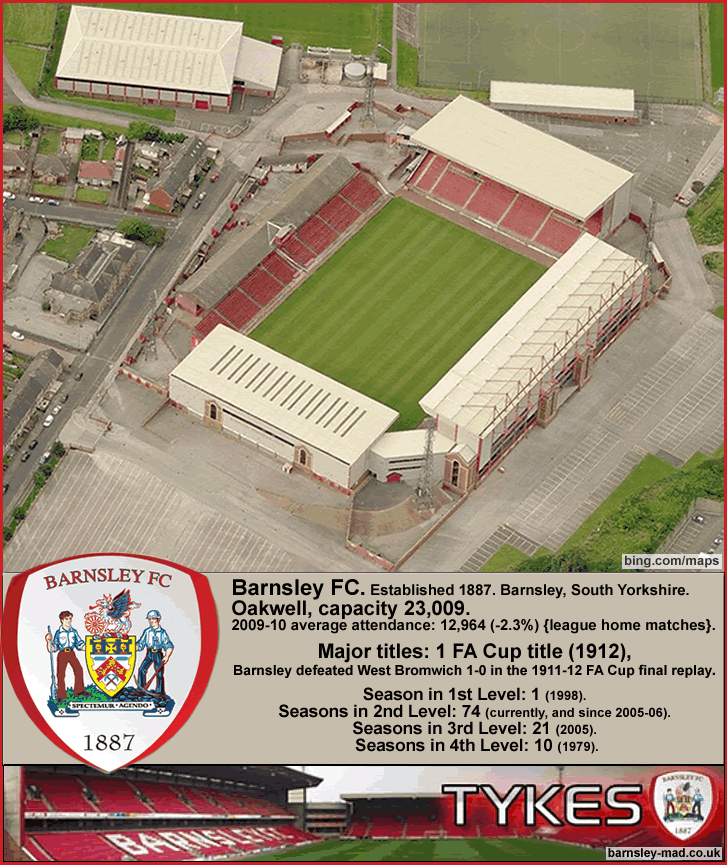
…
Thanks to Lanterne Rouge, who writes for the excellent Football League site, The Two Unfortunates.
Lanterne Rouge coined the phrase ‘The Greater Championship’ earlier this year. In the following article, from 9th January, 2010, he talks about the idea of which teams belong in ‘The Greater Championship‘
Since then, I had been thinking about compiling the stats. Before I got too deep into this, I contacted Lanterne Rouge, and he responded with the caveat that…’I must admit [the article] was shamelessly speculative and designed partly to wind up friends who support other clubs!’
Btw, Leeds is talked about in the article, but Leeds United are not on the All-time 1st or 2nd Level lists, due to Leeds United AFC’s somewhat late formation. Leeds United were established in 1919, and were elected to the Football League Second Division in 1920-21, and first won promotion to the First Division in 1924-25. So Yorkshire’s biggest club is not in the top 20 of the All-time 1st Level list (Leeds have spent 50 seasons in the 1st Level, 6 seasons shy of being in the top 20), nor are Leeds United in the top 24 of the All-time 2nd Level list (Leeds has spent 31 seasons in the 2nd Level).
…
Here are the lists and the data source I used. The best I could find for all-time / all clubs was from 9 seasons ago, at the Football365 site, here (http://stats.football365.com/hist/tier2/attable.html).
First Division seasons list, at RSSSF.com, under ‘Historical Domestic League History – Countrywise’ / then at ‘England – First Level All-Time Tables’, here.
For all-time season-by-season histories by club, I referred to the ‘League History’ section at each club’s Footy-Mad.net page… http://www.footy-mad.net/championship-news/ .
